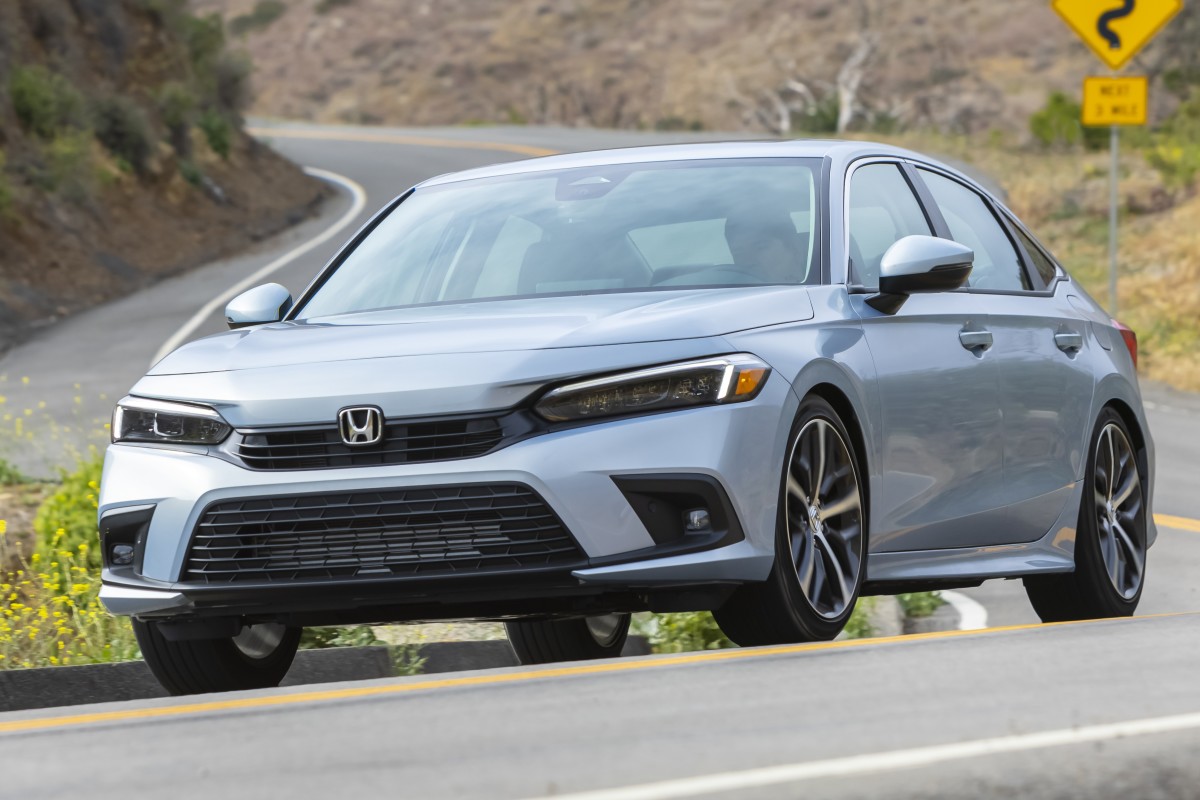One of the most important decisions to make when purchasing a new car is selecting the right drivetrain option. Among the choices available today, two of the most common configurations available are front-wheel drive (FWD) and all-wheel drive (AWD). Understanding the key differences between these systems can greatly influence your driving experience, safety, and overall satisfaction with your vehicle.
This guide aims to provide you with a comprehensive breakdown of FWD and AWD, helping you get the right car for your driving needs.
Front-Wheel Drive vs. All-Wheel Drive: Weighing the Pros and Cons
- What is Front-Wheel Drive (FWD)?
- What is All-Wheel Drive (AWD)?
- Advantages of Front-Wheel Drive (FWD) Vehicles
- Advantages of All-Wheel Drive (AWD) Vehicles
- Disadvantages of Front-Wheel Drive (FWD) Vehicles
- Disadvantages of All-Wheel Drive (AWD) Vehicles
- Which is Right for You? FWD or AWD?
What is Front-Wheel Drive (FWD)?
FWD is a drivetrain configuration where the engine's power is transmitted to the front wheels of the vehicle, pulling the vehicle forward. This two-wheel drive setup is commonly found in compact cars, sedans, and smaller SUVs, with the engine sitting just above the wheels it’s powering. FWD vehicles offer several benefits that make them an attractive choice for many buyers.
Despite its popularity today, FWD was not always the default option for many shoppers. Rear-wheel drive (RWD) was by far the dominant powertrain until the price of oil skyrocketed in the 1970s. Suddenly, those large RWD cars that Americans drove since the beginning of the 20th century fell out of favor, and smaller, more fuel-efficient FWD cars surged in popularity.
What is All-Wheel Drive (AWD)?
All-Wheel Drive (AWD) is a drivetrain configuration where power is distributed to all four wheels of the vehicle. AWD is commonly found in SUVs and crossovers, but lots of sedans, minivans and sports cars are also available with it.
AWD systems can vary from one manufacturer to another, but are generally either considered full-time or part-time. Most part-time AWD systems primarily drive the front wheels (similar to a FWD car) but when a loss of traction is detected, it can direct power to the rear wheels to keep you on your intended path. Conversely, a full-time all-wheel-drive system, also commonly referred to as four-wheel drive (4WD), engages all four wheels at the same time. You will often find a 4WD system available or standard on pickup trucks, SUVs, and other off-road focused vehicles.
Advantages of Front-Wheel Drive (FWD) Vehicles
If you're considering a FWD vehicle, here are some benefits to be aware of.
Lower cost
Because adding an AWD system generally increases the sticker price by thousands or more, front-wheel drive cars are the best option for budget-conscious buyers. The savings continue after you leave the dealership, as FWD cars generally cost less in the long run in terms of fuel, maintenance and repair costs, due to their lighter weight and simpler technology.
Superior Fuel Economy
For those seeking the best fuel economy, FWD excels because less energy is lost transferring power to the drive wheels. Mechanical AWD systems typically power the front and rear wheels by adding a driveshaft from the engine to the back of the car where it directs energy first through a differential and then outward to each rear wheel. Unfortunately this greatly expanded distance and addition of moving parts increases friction and ultimately makes the car less fuel efficient.
Not only does your pocketbook benefit from using less gas, lower emissions means the environment will benefit as well.
More passenger space
A car with FWD doesn’t need a driveshaft that runs to the back wheels, which means it doesn’t necessarily need a ‘transmission tunnel’ (the raised section of floor that runs down the center line of many vehicles). As a result, a car engineered purely for front-wheel drive can have a flat (or almost-flat) floor that offers more space for the legs and feet of rear-seat passengers. Front-wheel-drive versions of models offered with both FWD and AWD are still likely to have a tunnel, however, due to the additional cost of re-engineering them without a tunnel.
One other practical benefit of FWD vehicles is that they often have an engine that’s transversely rather than longitudinally mounted, meaning it runs across the width of the car instead of along its length. This layout allows more of the total length of the car to be given over to interior space.
Popular examples of FWD vehicles
Chevy Bolt EV
Honda Civic
Hyundai Venue
Kia Soul
Toyota Corolla
Advantages of All-Wheel Drive (AWD) Vehicles
All-wheel drive offers its own selection of benefits. Here are some key attributes to consider when shopping for an AWD vehicle.
Improved Traction and Stability
All-Wheel Drive (AWD) can benefit drivers who regularly encounter harsh winters, heavy rainfall, or who enjoy driving in off-road conditions. Drivers benefit from the superior traction available as their car can transfer power to all four wheels instead of just two, reducing wheelspin and keeping the car moving in its intended direction.
Enhanced Acceleration and Performance
With AWD, transmitting the engine's power to all four wheels provides better take-off and hill climbing as every wheel now has the capability to move the car forward. Sports car manufacturers utilize the system to transmit the ever-increasing power of their high-performance engines to the wheels for maximum acceleration and good handling.
On the flip side, because the front tires in a FWD car are uniquely tasked with both accelerating and steering, the tires not only tend to wear faster than the rear, but handling can be compromised by understeer, an undesirable trait where the car tends to steer less sharply than the amount input by the driver. AWD essentially eliminates this trait and should provide a neutral steering feel without any surprise tugging.
Safety Advantages
The additional traction that AWD offers can help a driver maintain control of their vehicle under acceleration, preventing slipping and sliding in wet, snowy, icy, or slippery conditions. One should be aware that AWD itself does not improve a vehicle’s ability to maintain direction when braking or improve braking distance, which can lead some drivers to overestimate their vehicles capabilities in ice and snow according to one study.
Popular examples of AWD vehicles
Subaru Forester
Toyota RAV4
Mazda CX-90
Jeep Grand Cherokee
Ford Explorer
Disadvantages of Front-Wheel Drive (FWD) Vehicles
While a great choice for most consumers, FWD isn’t perfect in every situation. During strong acceleration, the engine’s power can cause the steering wheel to pull in one direction, forcing the driver to counteract that force or risk heading in the wrong direction. While mostly eliminated in the newest cars, it’s something to pay attention to on a test drive. FWD can also struggle to maintain grip on steep inclines when the surface is slippery such as when encountering snow, ice, or loose gravel. Although towing a light load such as a bike rack with a FWD car is possible, any serious towing is a task best left to AWD or RWD vehicles, since the weight on the tow hitch inversely causes the front end of the vehicle to raise, reducing the front tires’ ability to provide traction.
Disadvantages of All-Wheel Drive (AWD) Vehicles
The additional traction offered by AWD has its benefits, but the addition of the system itself has its drawbacks as well. First, there’s the higher initial cost when purchasing a new all-wheel drive vehicle. Second, as previously mentioned, adding more drivetrain components adds weight and reduces fuel economy, often by several mpg, which increases operating costs. Third, typical AWD components such as the driveshaft, transfer case, rear axle, etc. eat up valuable space in the passenger and cargo area. Finally, because these components add complexity, they may need maintenance, repair, or replacement down the road, siphoning even more money from the owner’s wallet.
While AWD can help get you going when the going gets tough, it will not help stop your vehicle any better than FWD in challenging conditions. In fact, the added weight of the system can actually increase stopping distances. The false sense of security owners of AWD and 4WD vehicles may have when they don’t fully understand how their drivetrain system functions can lead to unintended consequences.
Which is Right for You? FWD or AWD?
Your driving habits will ultimately dictate which drivetrain system works best for your budget, driving style, and situation. FWD is the most cost effective choice for drivers who drive primarily in urban areas or on flat or hilly roads in a variety of mild to moderate weather conditions. Drivers of FWD cars will save gas, reduce emissions, and pay less to maintain and repair their car down the road. Electronic traction control can provide an additional layer of safety for FWD (and AWD) by momentarily reducing engine power until slipping tires have regained traction. Finally, in wintry driving conditions a FWD car with winter tires can often accelerate, brake, and handle better than an AWD car with all-season tires.
Choosing an AWD car can be the best choice for drivers who regularly traverse unpaved roads and rough terrain, live in an area with extreme winter weather, those who tow anything beyond the lightest loads, and for the adventure seeker who needs off-road capability—and some might even have higher-than-average ground clearance. Performance cars, due to their powerful engines, often benefit from AWD to get the most traction, since driving only two wheels under heavy acceleration would overwhelm the tires, causing them to lose grip and slip. An AWD vehicle equipped with winter tires and electronic traction and stability control is the absolute best choice for driving on slippery surfaces. If resale value is a priority, all-wheel drive cars will often command a premium when it’s time to sell.
As far as efficiency is concerned, it’s important to note that the benefits and drawbacks of AWD vs. FWD aren’t always cut and dry. A handful of newer AWD systems, specifically in hybrid vehicles, offer improved fuel economy by eliminating the mechanical connection to the rear wheels, instead driving them with electric motors, which provides the best of both worlds.
Ultimately, automakers’ AWD systems can vary in functionality, complexity, and efficiency, so it’s best to understand exactly how the AWD system works in the new or used car you intend to purchase.










